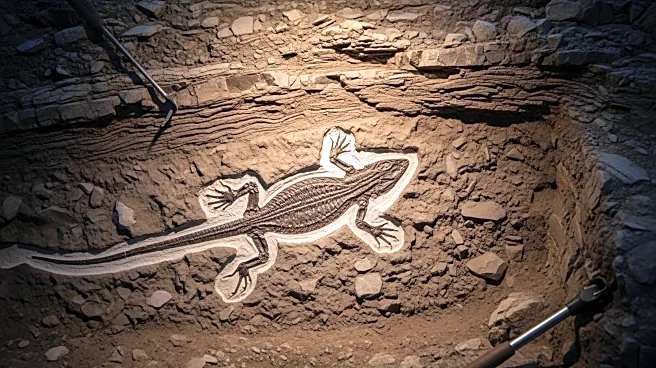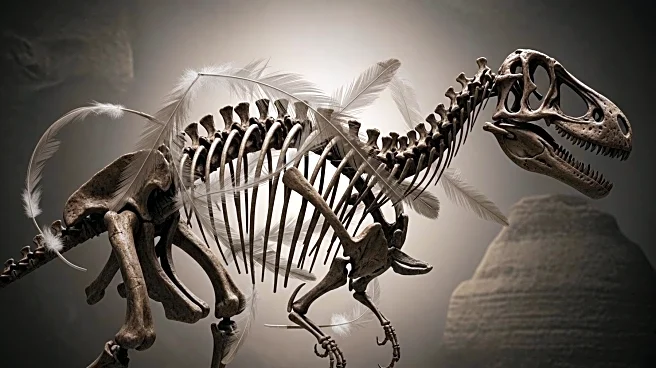What is the story about?
What's Happening?
Scientists have discovered the oldest-known member of the lizard family in southwest England, dating back 242 million years to the Middle Triassic epoch. The tiny reptile, which used large teeth to hunt cockroaches, was found at a fossil-rich beach in Devon. The discovery, announced in a study published in Nature, challenges previous assumptions about the evolution of lizards, snakes, and the tuatara, a New Zealand reptile. The fossil, named Agriodontosaurus helsbypetrae, was studied using advanced imaging techniques to reveal its unique features.
Why It's Important?
This discovery provides new insights into the early evolution of reptiles, particularly the lepidosauria order, which includes modern lizards and snakes. Understanding the anatomical features of ancient reptiles can shed light on the evolutionary adaptations that have occurred over millions of years. The study also highlights the importance of advanced imaging technology in paleontology, allowing researchers to examine small and complex fossils in detail. These findings contribute to the broader knowledge of reptile evolution and biodiversity.
What's Next?
Further research may focus on comparing the newly discovered lizard ancestor with other ancient reptiles to better understand the evolutionary pathways of lepidosaurs. Scientists may also explore the ecological role of this species in its environment and how it interacted with other organisms during the Middle Triassic epoch. The use of advanced imaging techniques could lead to more discoveries of small and intricate fossils, enhancing the understanding of prehistoric life.
AI Generated Content
Do you find this article useful?













